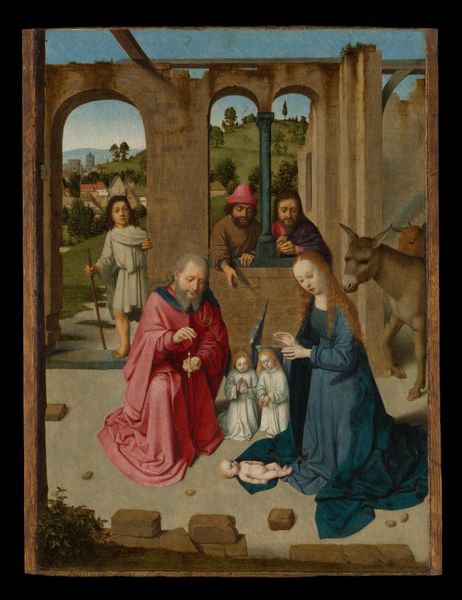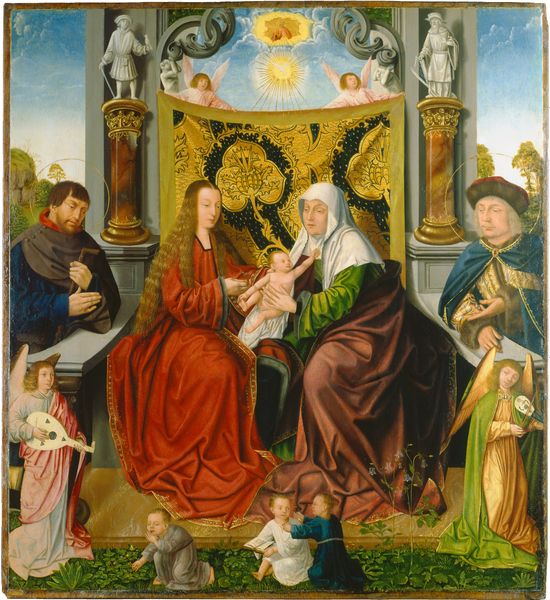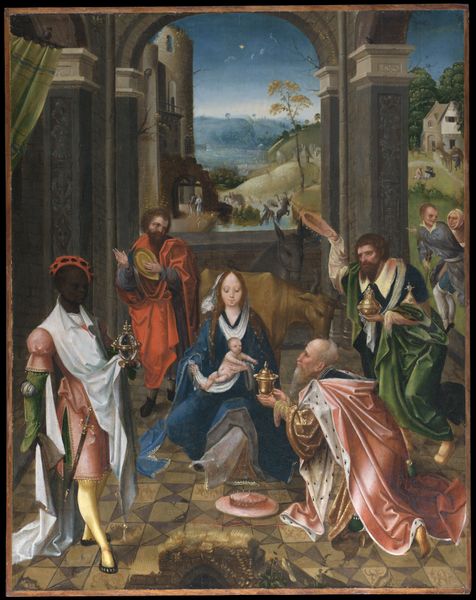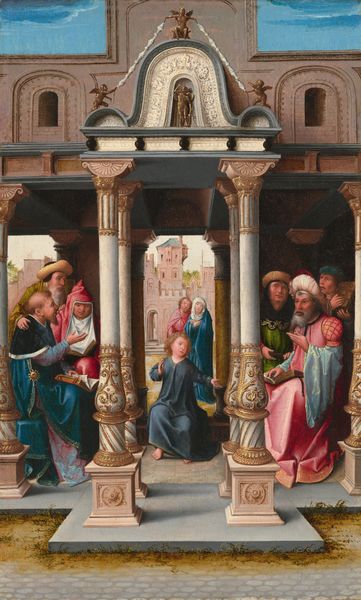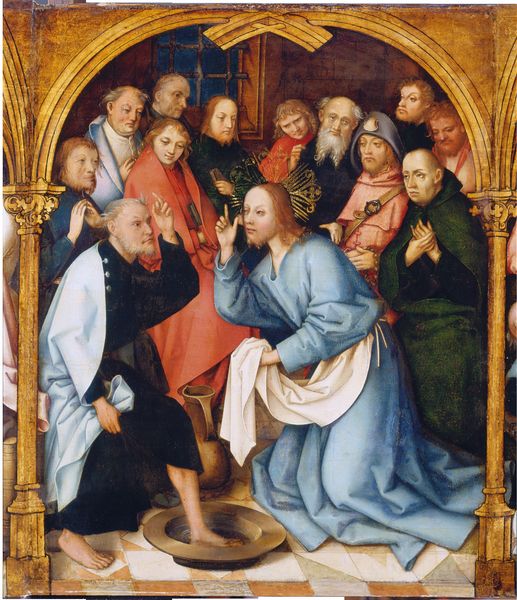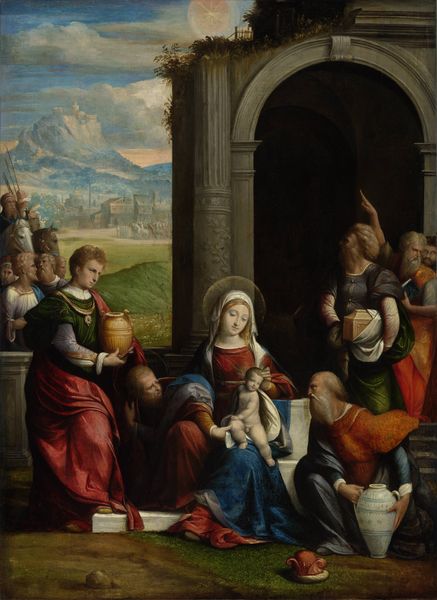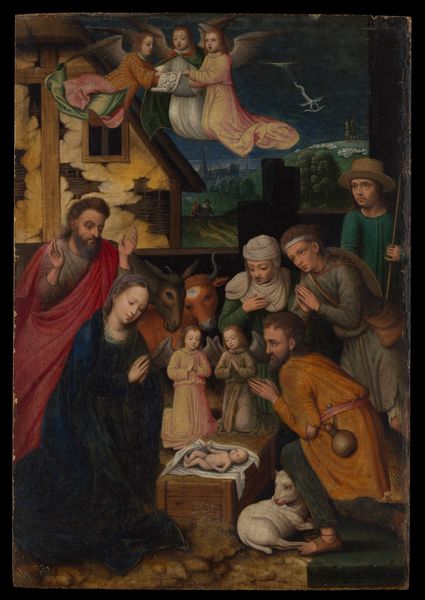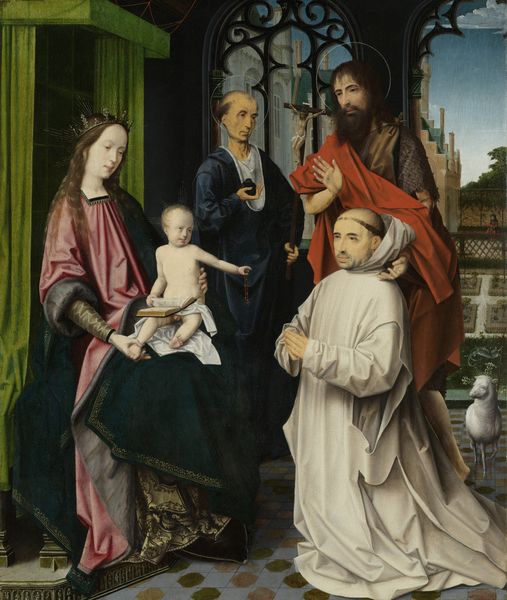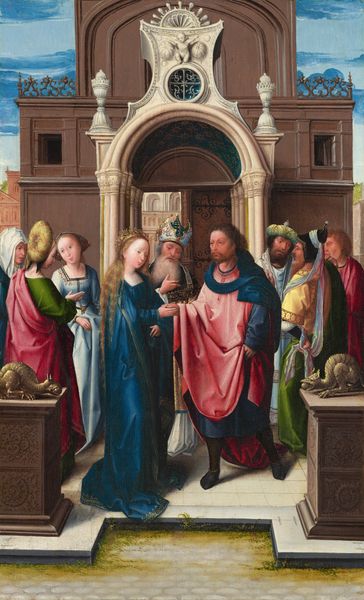
painting, oil-paint
#
painting
#
oil-paint
#
figuration
#
oil painting
#
genre-painting
#
northern-renaissance
Dimensions: overall: 74.6 x 57 cm (29 3/8 x 22 7/16 in.) framed: 93.3 x 74.9 cm (36 3/4 x 29 1/2 in.)
Copyright: National Gallery of Art: CC0 1.0
Curator: Let's have a look at this beautiful rendition of "The Adoration of the Shepherds," attributed to Adriaen Isenbrant, dating roughly between 1520 and 1540. The piece is rendered in oil paint. Editor: It has a quietly reverent tone, wouldn't you agree? The classical architecture seems to frame the figures almost like a stage, while the landscape peeks through, connecting it to a larger world. Curator: Indeed. The architectural setting serves multiple purposes. It places the event within a constructed world of human ambition, reflecting the emerging Renaissance interest in classical forms, while still keeping its holy nature in Northern Renaissance style. Notice how the ruined architecture reminds us that earthly things are fleeting in comparison to the divine. Editor: I am drawn to the angels—they are rendered with a sort of naiveté, aren't they? And there is one closest to the child, gazing at the infant Jesus with intense interest. The symbolism is clear, indicating a spiritual significance that transcends ordinary human experience. Curator: The artist presents this as an important event within a well-to-do household, judging by their garments. It’s interesting how these types of images reflected and reinforced social norms and piety during the Renaissance. These scenes brought religious narratives into people's everyday lives. Editor: The shepherd with his flute off to the left and those staring intently at the manger remind us that faith comes in various forms. Do you believe it has an intentional use of commonplace details? Curator: Yes, that juxtaposition serves to humanize a monumental event, drawing the viewer in. It also speaks volumes about the inclusivity inherent in the Christian narrative, a theme that resonates powerfully in the social and political context of the Reformation, which was gaining momentum at the time. Editor: And notice how Joseph is situated slightly apart from the Virgin and Christ? Curator: Right. His placement perhaps signifies the complex, liminal role he plays. His very presence offers reassurance and perhaps signals how traditional family structures have been upheld within society during that time. Editor: It strikes me how the cultural significance and interpretation of religious narratives can morph through time. I am glad to see they continue to inspire thoughtful discussion, still. Curator: Me, too! Examining a work like "The Adoration of the Shepherds" enables us to appreciate the artistic and historical context of its creation, while reflecting on our values and experiences.
Comments
No comments
Be the first to comment and join the conversation on the ultimate creative platform.
